Bamboo is an aquatic plant that has been the subject of much debate within the aquarium community.
It looks beautiful in a fish tank, but is it safe?
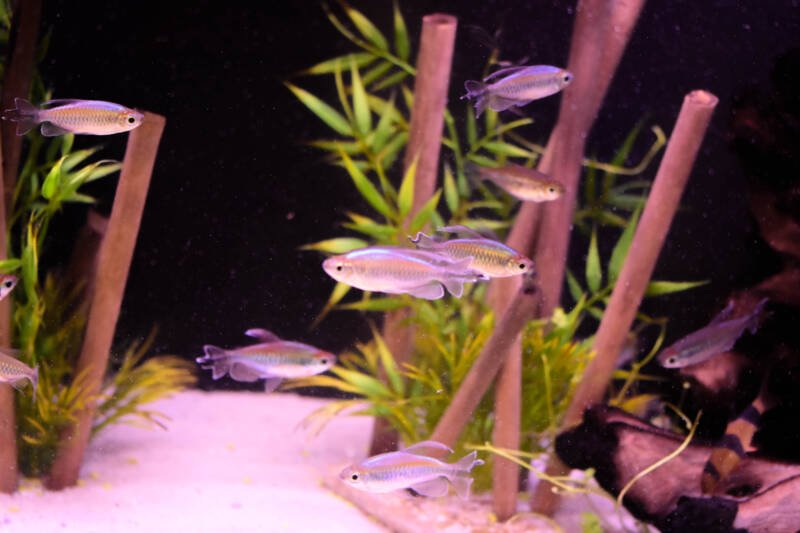
Unfortunately, authentic bamboo is not an aquatic plant and will begin rotting shortly after you put it in with your fish.
But don’t despair! You can either fully or partially submerge lucky bamboo (Dracaena sanderiana) in your aquarium, which looks similar to real bamboo and is, in fact, often mistaken for it.
Lucky bamboo is an elegant plant that adds a touch of sophistication to any aquarium.
It grows quickly and easily if its requirements are met, making it an excellent plant for beginners and experienced aquarists.
Almost any fish can be housed in a bamboo tank. Bamboo also lowers nitrates very efficiently, making it popular among those who know how to grow it.
In this article
Basic Information About Lucky Bamboo

Lucky bamboo is becoming an increasingly common household plant but is still less common in the fish hobby.
However, it is both a beautiful and practical plant to keep in your aquarium.
It is commonly found online and in regular stores, plant nurseries, and aquarium shops. Prices vary depending on the number of stems and maturity of the bamboo, but generally, it is very affordable.
Name and Origin
Though bamboo is often associated with Asian countries, lucky bamboo is actually native to Central Africa.
However, its similarities to true bamboo have led to a close (if inaccurate) association. This misconception carries beyond its name, however.
In fact, it is often used in practices associated with Asian origins, such as feng shui and décor schemes with Asian influences. Even when used in aquariums, it isn’t uncommon to see it interspersed with buddha and shrine ornaments.
Description
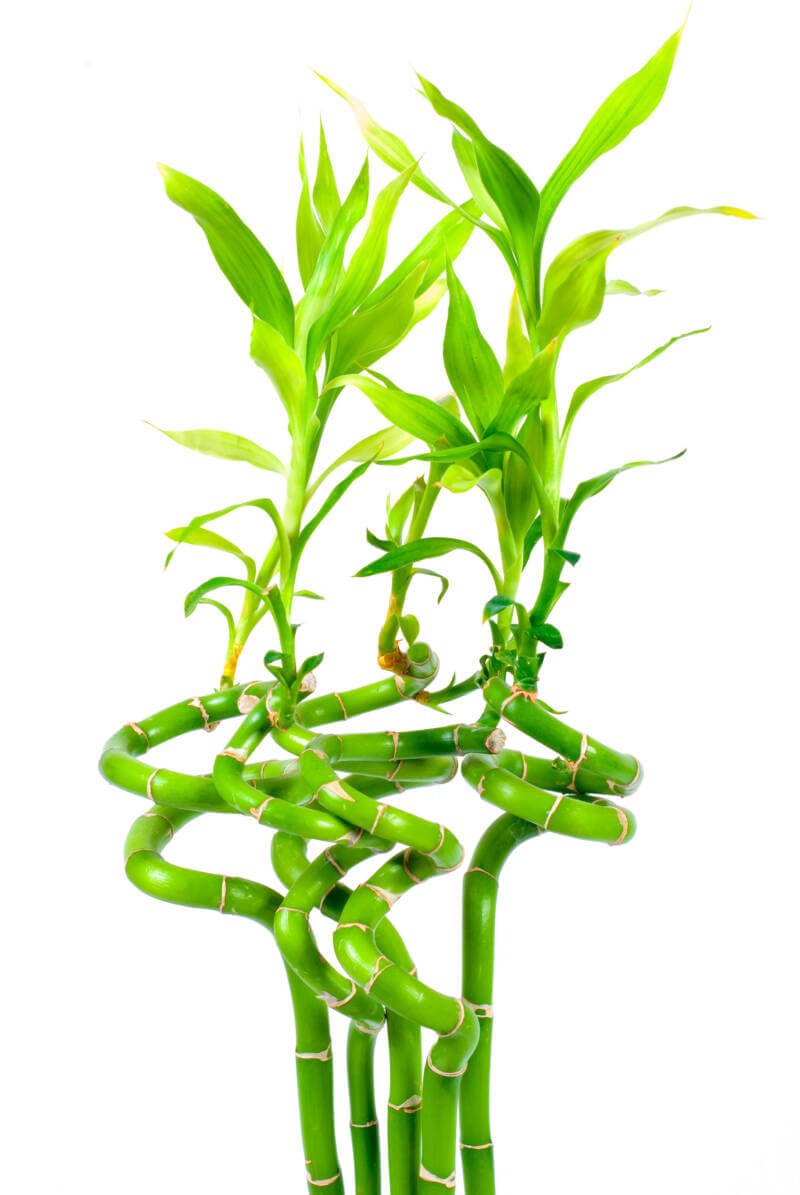
Lucky bamboo has a green central stalk with waxed tops and leaf shoots that grow along its sides. The leaves are slightly twisted and the same green color, which can range in pigment from a darker green to a light green that verges on yellow.
It rarely, if ever, flowers and is usually grown straight or in twisted varieties where the stem has been cultured into graceful spirals.
It closely resembles real bamboo but has fleshy stalks and is more water tolerant. Often planted in dense clusters, though it does equally well when grown individually.
This plant can grow up to 4’ (10 cm) high and can be bought just a few inches tall or nearly mature and near its maximum height.
Its growth rate can be slowed down or sped up depending on its environment.
If provided ample light and nutrients, it can quickly shoot up. However, in general, it grows at a more sedate pace.
Lifespan
Ten years is often cited as the general lifespan for lucky bamboo. However, this is somewhat contested due to the controversy surrounding how to grow it properly.
Some aquarists claim that it only truly thrives for a short number of years, while others have reported that they’ve kept their bamboo for much longer than just one decade.
Because of its height range and versatility, lucky bamboo can be planted anywhere in the aquarium.
Shorter stalks do well in the foreground or midground, while taller stalks blend in well in the background.
How to Grow Lucky Bamboo
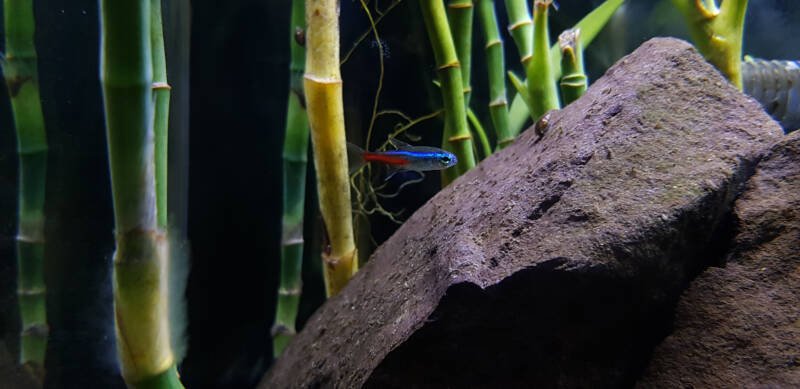
Growing lucky bamboo is relatively easy, making it an excellent plant for beginners and experienced aquarists.
It can be used to create a bamboo forest or add Asian motifs in a tank, or be planted as part of a larger aquascape.
A minimum of five gallons is required to stabilize the water. However, this plant benefits from larger aquariums for reasons we’ll discuss below.
Lucky bamboo is not a true aquatic plant and as such, is also subject to controversy about whether it has to be grown partially or fully submerged.
When grown partially submerged, the leaves and at least a third of the stem must be above the waterline.
This plant can be grown fully submerged, but specific requirements must be met for it to survive and continue growing.
Required Equipment
Several pieces of equipment are required to keep lucky bamboo alive in the aquarium:
Carbon Dioxide
Lucky bamboo absolutely requires moderate to high carbon dioxide.
Liquid dosing can suffice with frequent enough additions, but it’s more recommended to install a pressurized or canister CO2 system.
Aeration
This plant requires high levels of oxygen and aeration to survive, which means you’ll need a bubbler or air stones and moderate water movement. Filters with powerful outputs are also helpful.
Substrate
For lucky bamboo to root well and establish a sturdy root system, it will need a quality, nutrient-rich plant substrate. It will also need to be planted relatively deep, at least three inches (7.5 cm).
Lighting
This bamboo has low to moderate lighting requirements, making this the easiest piece of equipment to find. Direct sunlight will burn the bamboo leaves, causing them to turn yellow and die.
This equipment can fit aquariums of all sizes. However, fish and other tank inhabitants benefit from larger gallon sizes since they may be otherwise thrown about by the water current.
Keep in mind that most of these requirements are for lucky bamboo that is being grown fully submerged.
For partially submerged plants, lower oxygen and CO2 levels are acceptable.
It can still be grown in the substrate or another place, such as the filter (one of the latest aquarium trends).
Low to moderate lighting for 10-12 hours is still required.
Water Parameters
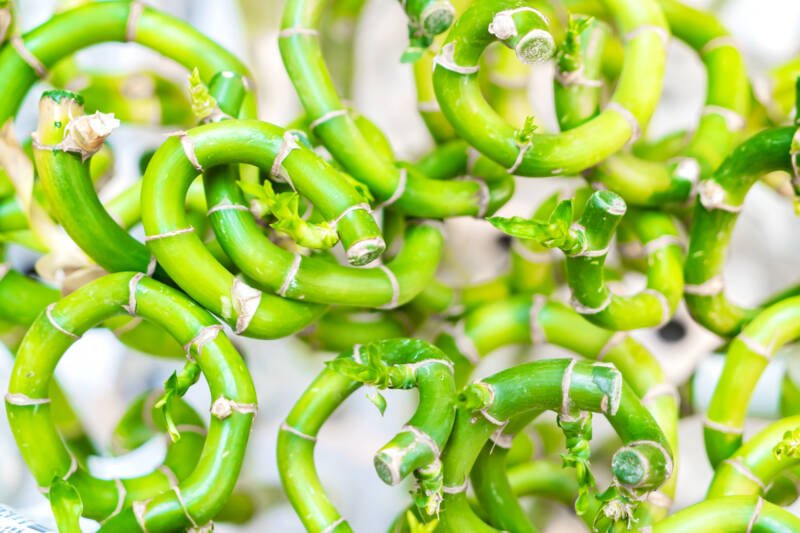
The most important part of growing lucky bamboo is that the aquarium must be freshwater.
Lucky bamboo will quickly die in brackish or saltwater tanks.
Beyond having a freshwater aquarium and the equipment described above, lucky bamboo is fairly hardy and can handle a broader range of water parameters.
It is so versatile that temperature is the only water parameter that needs to be monitored regularly.
And even that parameter is relatively broad in nature since lucky bamboo can survive temperatures ranging from 59–80°F (15-27°C). This makes it an excellent fit for both cold water and tropical aquariums.
Like all other plants, lucky bamboo doesn’t do well in tanks with consistently poor water quality.
High levels of ammonia, nitrites, and nitrates will eventually cause the bamboo to suffer and die. Though lucky bamboo will avidly absorb nitrates, it can only handle so much of it.
Weekly water changes of at least 25% are recommended as a baseline change. It could be tweaked depending on the size of your aquarium and bioload.
Tank Mates and Compatibility
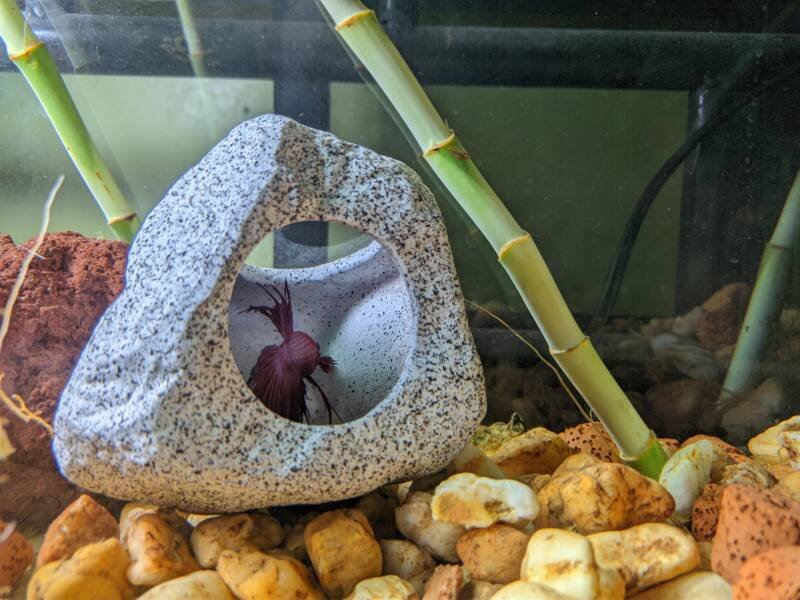
Lucky bamboo does well with almost any tank inhabitant.
Though it doesn’t do as well with burrowing fish that like to eat or uproot plants, bamboo is usually planted deep enough that even this isn’t as much of an issue.
Bamboo’s wide growth parameters also allow for more compatible inhabitants than many other plants. Some common tank mates include:
And these are just a few! They can also easily be housed with “clean-up” crew members, such as shrimp and snails.
In paludariums or other types of vivariums, bamboo is often planted in tanks with frogs and toads.
Propagation
Bamboo plants will grow progressively taller and sprout more shoots along their sides. In turn, these shoots can grow to a respectable girth of up to half the diameter of the original stalk.
However, this natural growth pattern won’t produce other plants; instead, the original plants will simply, well, grow.
Cuttings are the recommended way to propagate lucky bamboo.
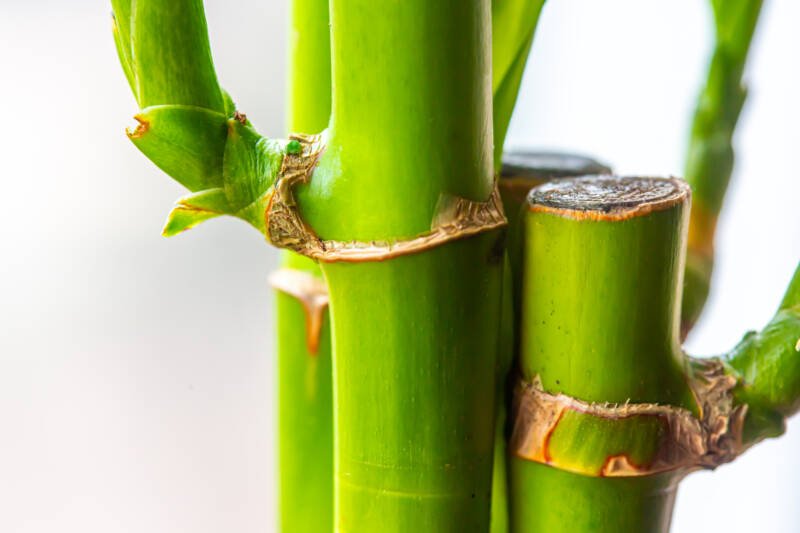
However, keep in mind that the bamboo plant must be healthy in order for it to recover and for the new cutting to survive and flourish.
Cutting should have at least one leaf joint, but preferably more.
Before cutting, you’ll need to trim the existing leaves back to expose the growth node.
Once exposed, use sharp scissors to cut off a shoot cleanly. The cut should have precise edges and not be jagged or torn.
When you have your desired number of trimmings, you can either root them in the water with the primary plants or start them in soil and later transfer them to the aquarium.
However, embedding them in water tends to prove more successful, so this is the recommended method if you have room in your tank.
You can either keep the cutting above the substrate but temporarily anchored or plant it directly in the substrate with the parent bamboo.
But there are two considerations to take into account before planting it in substrate:
- Is the cutting big enough to be placed 3-4 inches (7.5-10 cm) in the substrate and still have a significant portion of it in the open water?
- Is the substrate fine enough that the new and delicate roots won’t have a problem growing and forming a network?
Roots should begin to appear from the bottom of the stalk within a few days.
You’ll be able to see them if your cutting is anchored easily, but it may be hard to see if your stalk has already been placed into the substrate. Regularly check your cuttings to ensure they’re growing well and not rotting.
If you’re having issues with growing cuttings, it may be beneficial to look into adding a rooting hormone to your propagation routine.
Common Health Issues
If lucky bamboo isn’t provided with the right growing conditions, it will quickly begin showing health issues.
Most of the common problems will show in the bamboo leaves first, rather than the stalk:
- Brown spots
- Yellow leaves
- Small leaves
- Internodes
- Stunted growth.
If you notice any of these issues with your bamboo, there are a few steps you can take to try and identify the problem.
- Test your water parameters to see if ammonia, nitrite, or nitrates are present and how high the levels may be.
- Examine the substrate, CO2, and dosings to make sure the lucky bamboo is receiving enough nutrients.
- Make sure the light isn’t too strong and that direct sunlight isn’t also getting into the aquarium.
- Check the oxygen levels and water current in the aquarium to make sure the water is sufficiently aerated.
Another step not directly related to the bamboo itself is to check the health of your other aquarium inhabitants, which may affect the aquarium plants.
Keeping Lucky Bamboo in Your Aquarium
Lucky bamboo isn’t one of the most popular or common aquarium plants, but it is undoubtedly beautiful and elevates any tank it’s added to.
Though sometimes tricky, growing bamboo in an aquarium can produce rewarding and stunning results.
When done correctly, lucky bamboo creates an effortlessly elegant look that is only complemented by other fish as they weave through the stalks.
Beyond its beauty, it also has several practical purposes.
Lucky bamboo is an efficient cleaner for your tank and will quickly soak up nitrates and other chemicals. It is easy to care for and hardy overall, making it the right choice for aquarists of all experience levels.